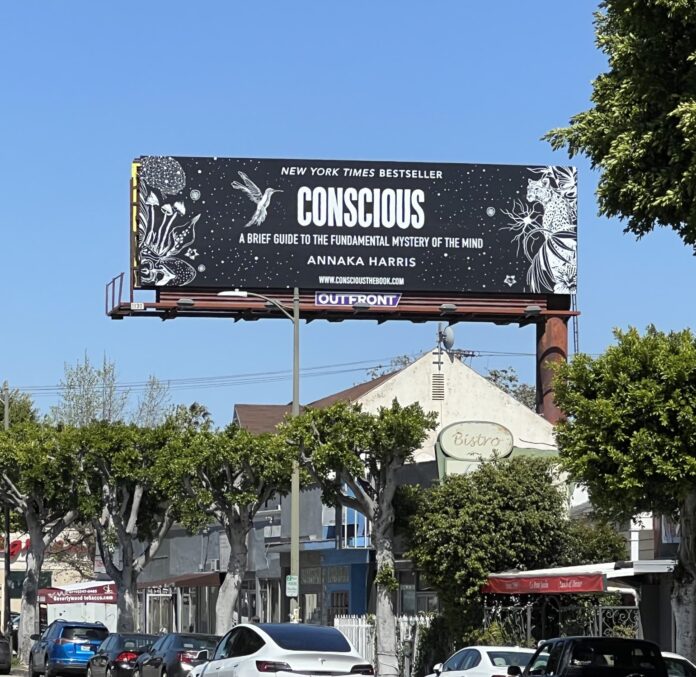Maria Irene
In “Conscious: A Brief Guide to the Fundamental Mystery of the Mind,” author Annaka Harris tackles the intriguing and complex subject of consciousness, offering readers an insightful, accessible, and thought-provoking journey into the heart of this age-old mystery. Harris’s work is a concise and engaging exploration of the nature of consciousness, presenting various theories and models in a manner that is both informative and accessible to a general audience.
The book begins by setting the stage for a comprehensive exploration of consciousness, emphasizing its significance as one of the most profound and enduring questions in the history of human thought. Harris acknowledges that the topic can be daunting, but she skillfully guides readers through complex ideas with clarity, providing a solid foundation for understanding the material.
Throughout the book, Harris presents various theories and models of consciousness, from well-established scientific perspectives to more speculative and controversial ideas. She provides a balanced view of the topic, allowing readers to appreciate the merits and limitations of each approach. Notably, Harris introduces readers to the Integrated Information Theory (IIT) by Giulio Tononi, the Global Workspace Theory (GWT) by Bernard Baars, and the theories proposed by philosophers like Daniel Dennett and David Chalmers.
One of the most intriguing aspects of the book is the examination of the “hard problem” of consciousness, a term coined by philosopher David Chalmers. Harris explores the difficulties in explaining subjective experience, the first-person perspective that is often considered the essence of consciousness. By addressing the limitations of current scientific explanations, she highlights the need for novel approaches to understand and explain the phenomenon.

The author also considers the implications of artificial intelligence and machine consciousness, providing a captivating discussion on the ethics and moral considerations of creating conscious machines. Harris delves into the potential consequences and responsibilities we may face as we develop technologies capable of experiencing subjective states. This thought-provoking exploration encourages readers to reflect on the implications of consciousness beyond human beings.
Another fascinating aspect of the book is the relationship between consciousness and meditation. Drawing on her personal experience with mindfulness practice and her work with her husband, neuroscientist Sam Harris, the author discusses the potential benefits of meditation in understanding the nature of consciousness. This section offers readers practical insights into the ways in which meditative practices can alter our subjective experience and deepen our understanding of the mind.
Throughout the book, Harris supports her exploration of consciousness with engaging anecdotes, real-world examples, and thought experiments that encourage readers to question their own assumptions and beliefs. One such example is the “Mary’s Room” thought experiment, which challenges readers to consider the limits of scientific knowledge in explaining conscious experience. By weaving these elements into her narrative, Harris effectively engages her audience and makes complex ideas more accessible.
The writing style employed by Harris is both clear and concise, making the material easy to digest even for those who may be new to the subject. The book’s relatively short length and focused scope allow readers to gain a comprehensive understanding of consciousness without becoming overwhelmed by excessive detail or technical jargon.
One potential criticism of the book is that it may leave readers wanting more in-depth exploration of certain theories or ideas. However, given the book’s intended purpose as a brief guide, it is understandable that not every aspect of consciousness can be exhaustively examined. Instead, the book serves as an excellent starting point for readers interested in delving further into the subject on their own.
Another noteworthy aspect of the book is its interdisciplinary approach. Harris skillfully integrates perspectives from various disciplines, including neuroscience, philosophy, and psychology, to provide a well-rounded understanding of the topic. This comprehensive approach allows readers to appreciate the complexity and nuance of consciousness, and encourages them to consider multiple viewpoints as they grapple with this fundamental mystery. By drawing on such diverse sources of knowledge, Harris demonstrates the need for collaboration and dialogue among various fields to make progress in understanding consciousness.
Overall, “Conscious: A Brief Guide to the Fundamental Mystery of the Mind” is a must-read for those interested in the nature of consciousness, whether they are newcomers to the subject or seasoned scholars. The book offers a captivating and informative journey into the heart of one of the most enigmatic questions in human thought, leaving readers with a newfound appreciation for the complexity and beauty of the conscious mind.
Get the Audiobook: https://www.amazon.com.au/Conscious-Brief-Guide-Fundamental-Mystery/dp/B07NTSWCP2/ref=tmm_aud_swatch_0?_encoding=UTF8&qid=1679700866&sr=1-1


